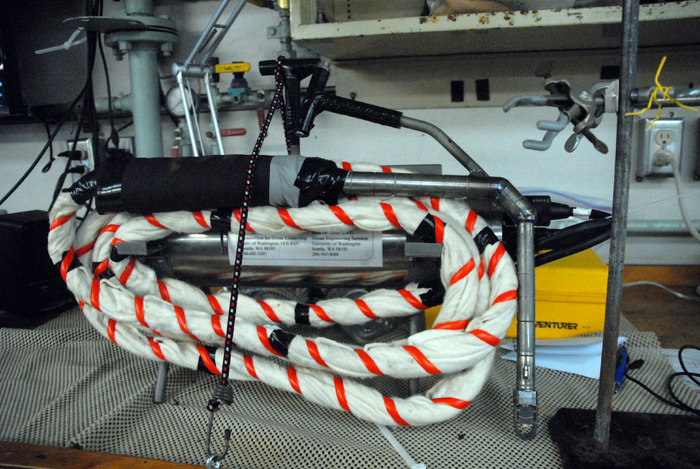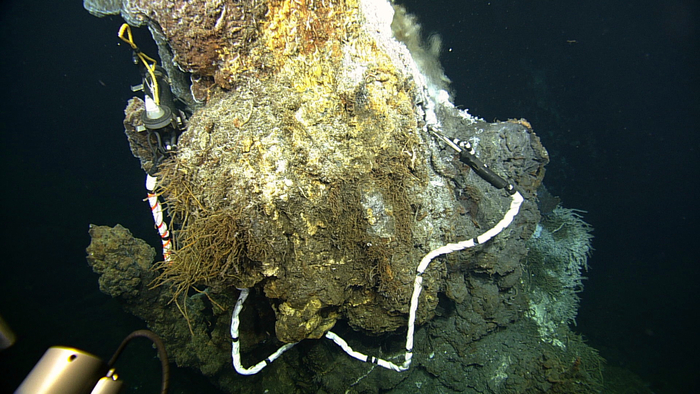Hydrothermal Vent Fluid Temperature and Resistivity
The Hydrothermal Vent Fluid Temperature and Resistivity sensor measures the temperature, resistivity, and Eh of the mineral-rich fluid plumes that emanate from cracks on the seafloor, providing insight into the sub-surface structure and dynamics of these unique habitats. Known as the “Res Probe,” this novel seafloor instrument is designed to go inside the “throats” of high temperature (up to 480°C) black smoker chimneys to measure the resistivity and temperature of the hydrothermal vent fluids. Resistivity is an analogue for chlorinity, measuring the “saltiness” of the vent fluids. Many of the structures at Axial Volcano emit boiling fluids, as reflected by their high temperature and low chlorinity. The white wrapping around the cable prevents overheating of the cable by surrounding hydrothermal fluids, should a change in venting sites occur during the duration of the installation.
(text and images courtesy of Interactive Oceans)
Data Products
This instrument measures the following data products. Select a data product's name to learn more.
| Data Product | Code | DPS |
|---|---|---|
| Vent Fluid Chloride Concentration | TRHPHCC | DPS |
| Vent Fluid Oxidation-Reduction Potential (ORP) | TRHPHEH | DPS |
| Resistivity R1 | TRHPHR1 | |
| Resistivity R2 | TRHPHR2 | |
| Resistivity R3 | TRHPHR3 | |
| Vent Fluid Temperature from TRHPH | TRHPHTE | DPS |
| Thermocouple Temperature | TRHPHVC | |
| ORP Volts | TRHPHVO | |
| Thermistor Temperature | TRHPHVS |
The algorithm code used to generate data products for this instrument is also available in the ion-functions GitHub repository.
Instrument Models & Deployed Locations
The OOI includes the following instrument makes and models for this instrument type. Follow the links below to find out where in the OOI this instrument has been deployed. You'll also find quick links for each instrument to Data Explorer, where you can plot and access data.
| Class-Series | Make | Model |
|---|---|---|
| TRHPHA | Lilley, UW | Vent Temperature & Resistivity |



